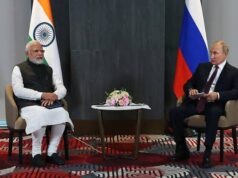Iraq’s Oil Flow To China Increases By 50% And Flow To India Dips 30%

The flow of Iraqi crude oil to Asia’s giant oil consumers took a new turn in the past two months, influenced by waning oil demand, and trading activities amid low prices. Basrah exports to the Indian market kept dropping in May, reaching their lowest monthly level since mid-2018, according to vessel tracking data. Exports to China, on the other hand, climbed to an all-time high, months after COVID-19 fueled concerns over Iraq’s exports to the Chinese market.
In April, Iraq’s Basrah exports to China climbed to 1.5 million barrels per day (bpd), a remarkable increase compared to the nearly 1 million bpd average in 2019, according to Homayoun Falakshahi, a senior analyst at Kpler, a data intelligence firm. Exports remained strong in May, as China “has taken advantage of lower oil prices to continue building stocks”, Falakshahi pointed out, while gradually reopening its economy.
Basrah Light crude composed more than 90 percent of Iraq’s exports to China in April and May, according to Kpler. In a conversation with Ahmed Mehdi, a research associate at the Oxford Institute for Energy Studies, he highlighted that in addition to reopening the Chinese economy, another element that played a role in the surge of Basrah Light imports “was opportunistic buying for storage and the surge of trading activity on the Shanghai International Energy Exchange—where Basrah Light is a deliverable grade underpinning the contract.” Last month, Reuters reported that some investors have been “filling commercial storage tanks held by” China’s Shanghai futures contract, as they bet on a rebound in oil prices.
Crude exports to China from northern Iraq, via the Turkish port of Ceyhan, also saw a significant rise in May. Shipments to China made up 44 percent of overall exports of aroun 400,000 bpd last month, according to data from TankerTrackers.com, a company that tracks oil tankers using satellite imagery, among other tools.
Crude exports to the Indian market, meanwhile, took a dive. Basrah loadings began to slow down in April amid a nationwide lockdown in India due to COVID-19, reaching 724,000 bpd in May, around 30 percent drop from March, based on Kpler’s data. To put that drop into further perspective, Iraq’s crude exports to the Indian market last year averaged close to 1 million bpd.
Crude oil loadings to India in general hit a multi-year low in May, according to Falakshahi, as oil inventories neared the brim. “India had to almost stop importing oil as its inventories were getting full,” he said this month. Even Saudi crude exports to India tumbled from around 1 million bpd in April to below 800,000 bpd last month, according to Kpler. Iraq and Saudi Arabia are India’s top oil suppliers.
On May 24, India’s Minister of Petroleum and Natural Gas, Dharmendra Pradhan, was quoted in local media as saying that demand “will reach pre-Corona level in June.” However, as the country began to relax its lockdown measures, fears over the ongoing surge in COVID-19 infections resurfaced.
An informed Iraqi source, who spoke on condition of anonymity, confirmed that Iraqi exports to India dropped in April and May, claiming that “Indian demand has now returned in earnest.” However, the source noted that the current OPEC+ output cuts agreement, and Iraq’s need to comply with its quota, “restrict the act of addressing demand.”
l
Iraq’s low compliance with the April 12 OPEC+ agreement drew major attention earlier this month, although this issue is not out of the ordinary. A review of Iraq’s stance towards OPEC’s decision to curb output back in 2016, clearly shows the country joined the agreement reluctantly after it had argued for an exemption. Despite voicing challenges back then and highlighting the fight against ISIS, increased production over the previous few years meant that Iraq had to enter the deal and curb its crude output. By November 2015, Iraq’s crude oil production was at 4.3 million bpd, based on secondary sources cited in an OPEC Monthly Oil Market Report.
Iraq’s compliance with its current quota of 3.59 million bpd has been problematic, and it is unclear how the country will “fully comply” with the OPEC+ agreement moving forward as Iraq’s newly appointed oil minister, Ihsan Abdul Jabbar Ismaael, said on June 6. The country will struggle to fully abide by the curbs without worsening its own financial troubles, especially when prices are still low despite a cautious recovery. Federal crude exports (excluding exports from the Kurdistan Regional Government) totaled 3.2 million bpd in May, with revenues around $2 billion, compared to just over $7 billion the same month last year.
Additionally, capping output at 3.59 million bpd will include curbing production at oilfields operated by International Oil Companies, which will subject Baghdad to heavy compensation fees. Deep cuts will also force Iraq to reconsider oil sales when its own officials are seeking to raise revenues.
According to recent reports, Iraq’s State Organization for Marketing of Oil (SOMO) has asked certain customers if they would consider skipping some of their contracted Basrah crude shipments slated for this month and July, linking this to possible efforts from Baghdad to adhere to further cuts. However, it remains to be seen how such requests will be met. Iraqi crude flow to Asia this month could take a new direction if the country manages to find a way to increase its compliance, as its key Asian customers India and China continue to gradually reopen their economies.




